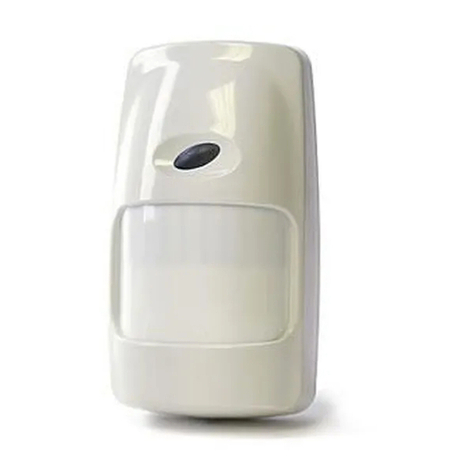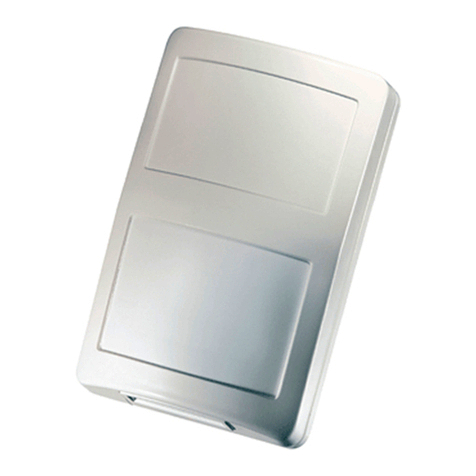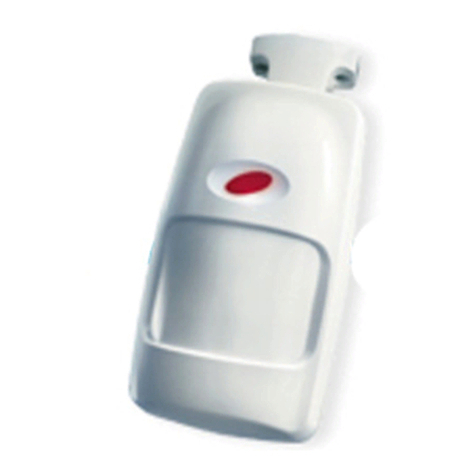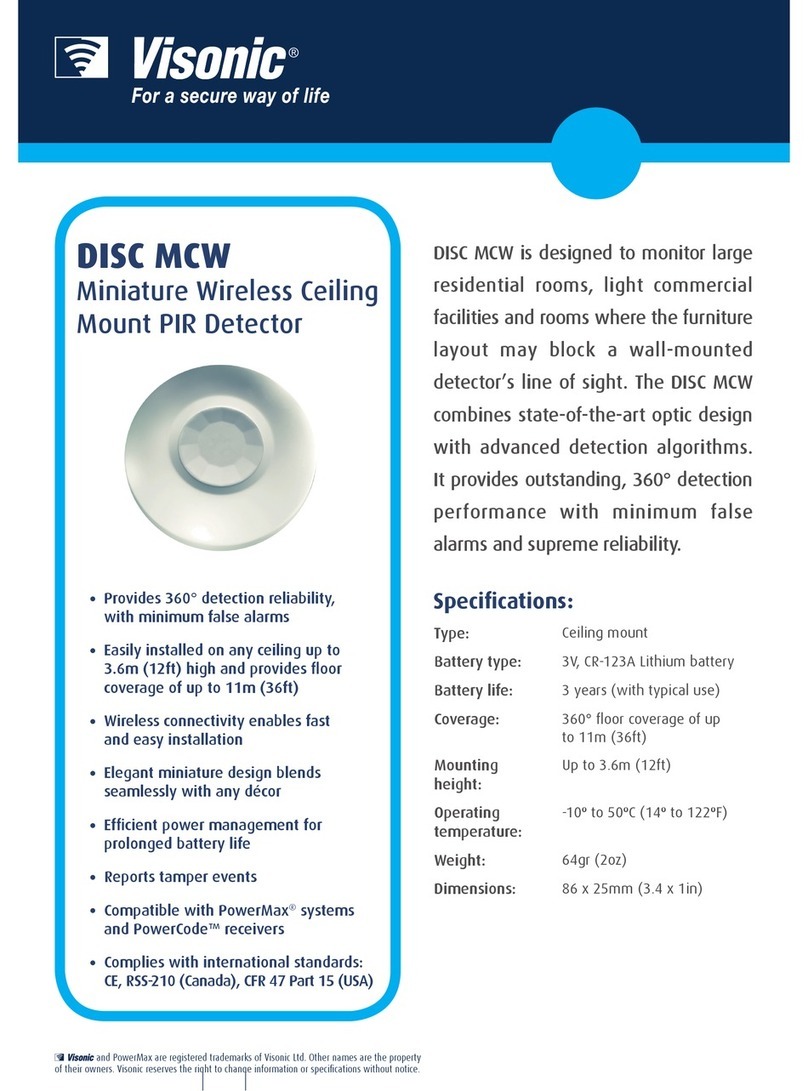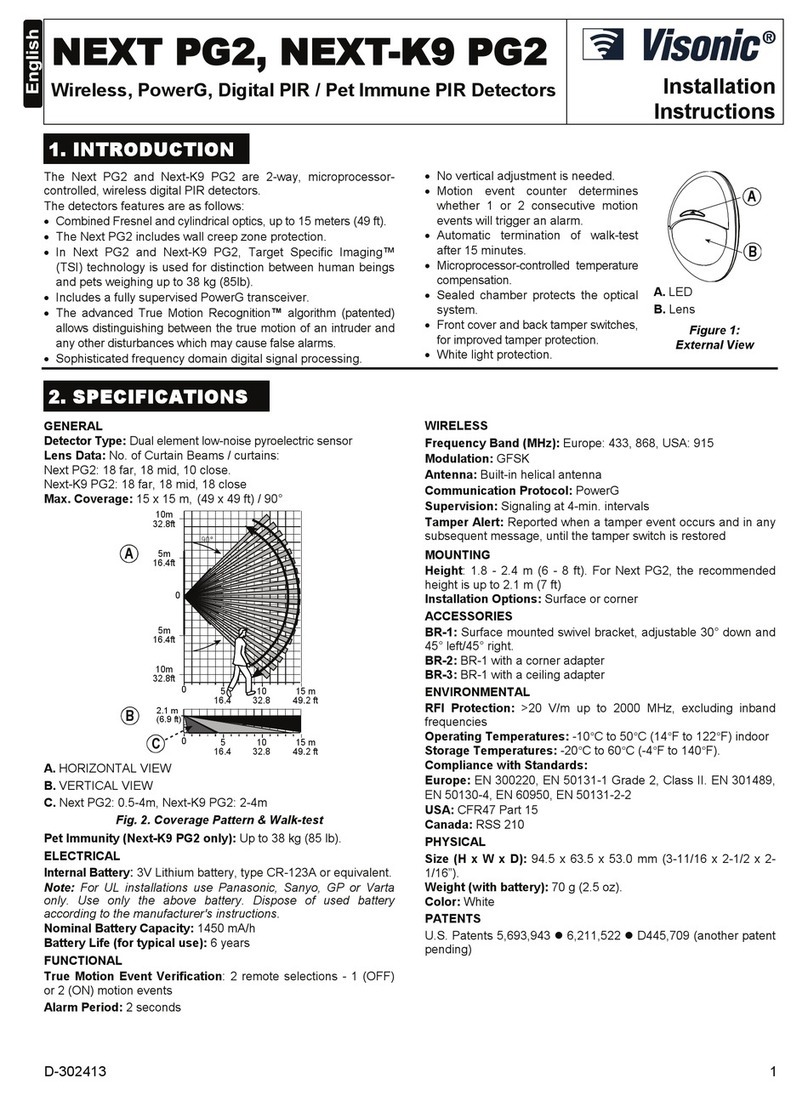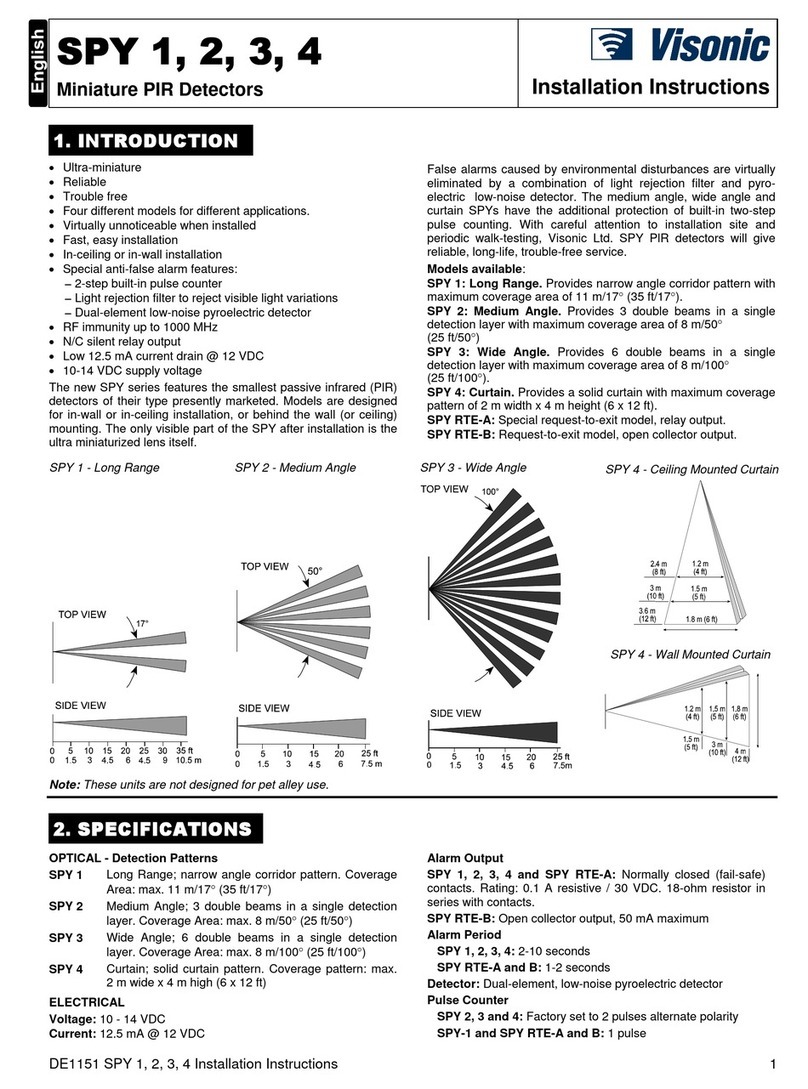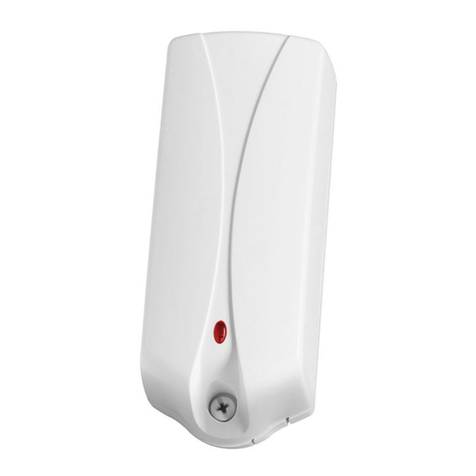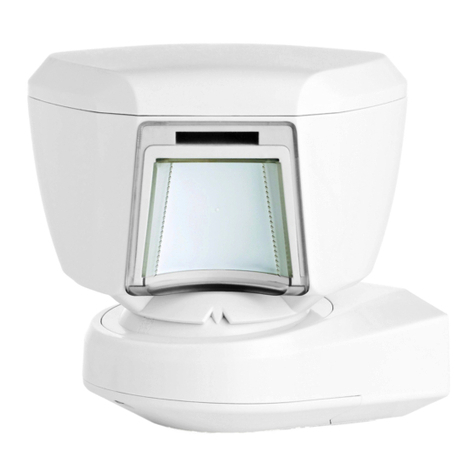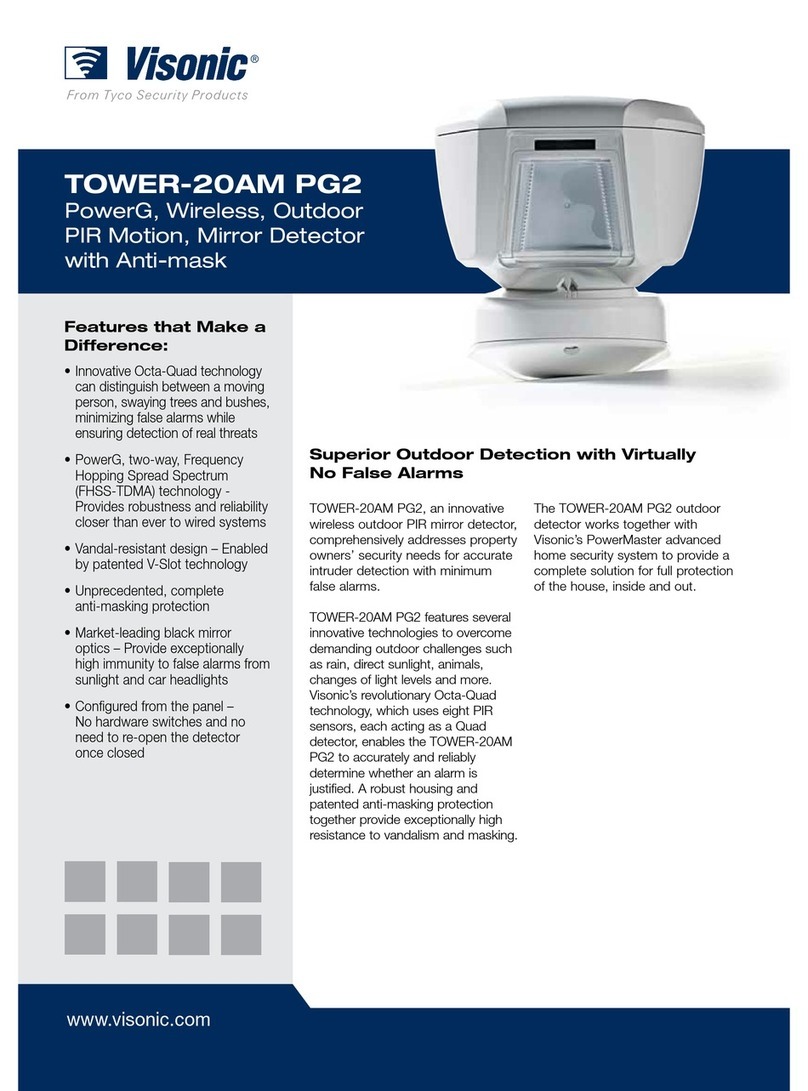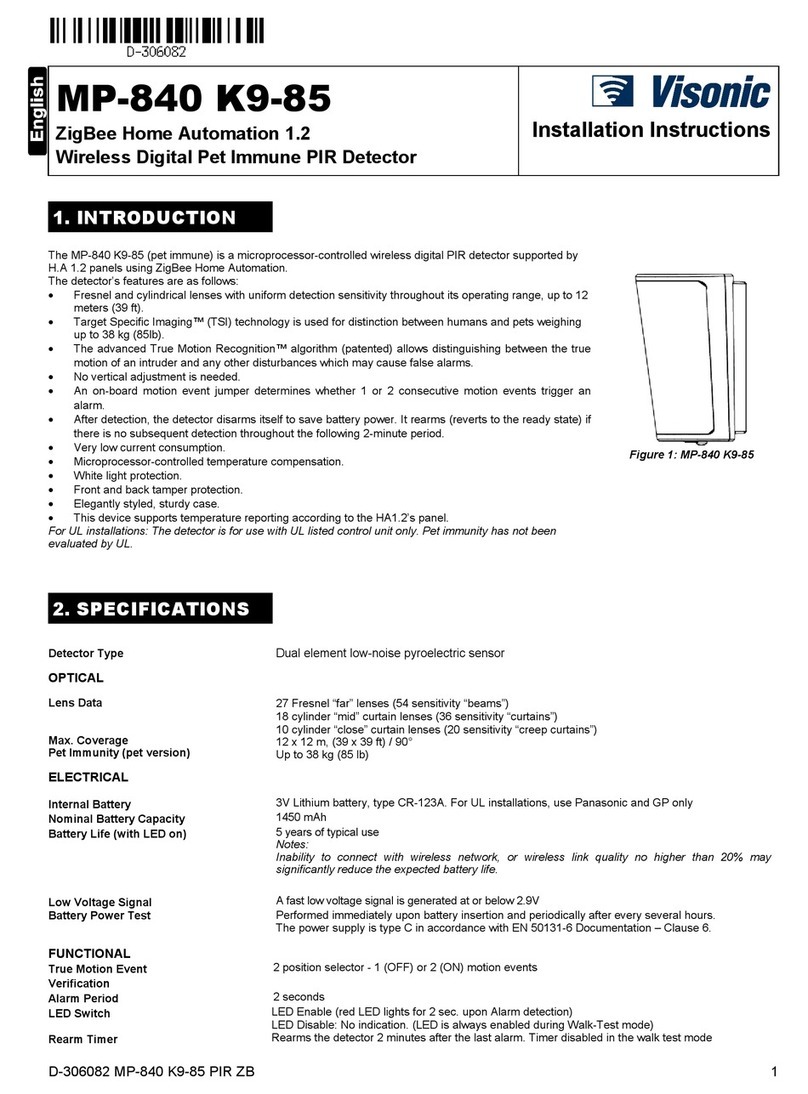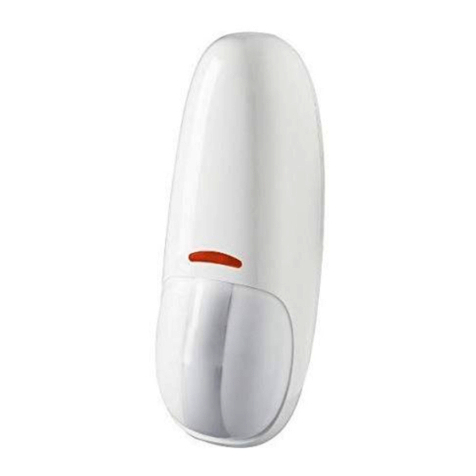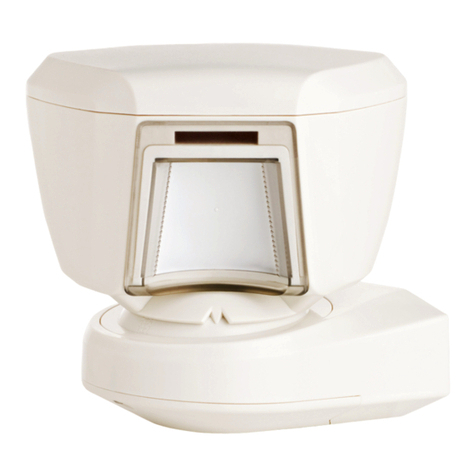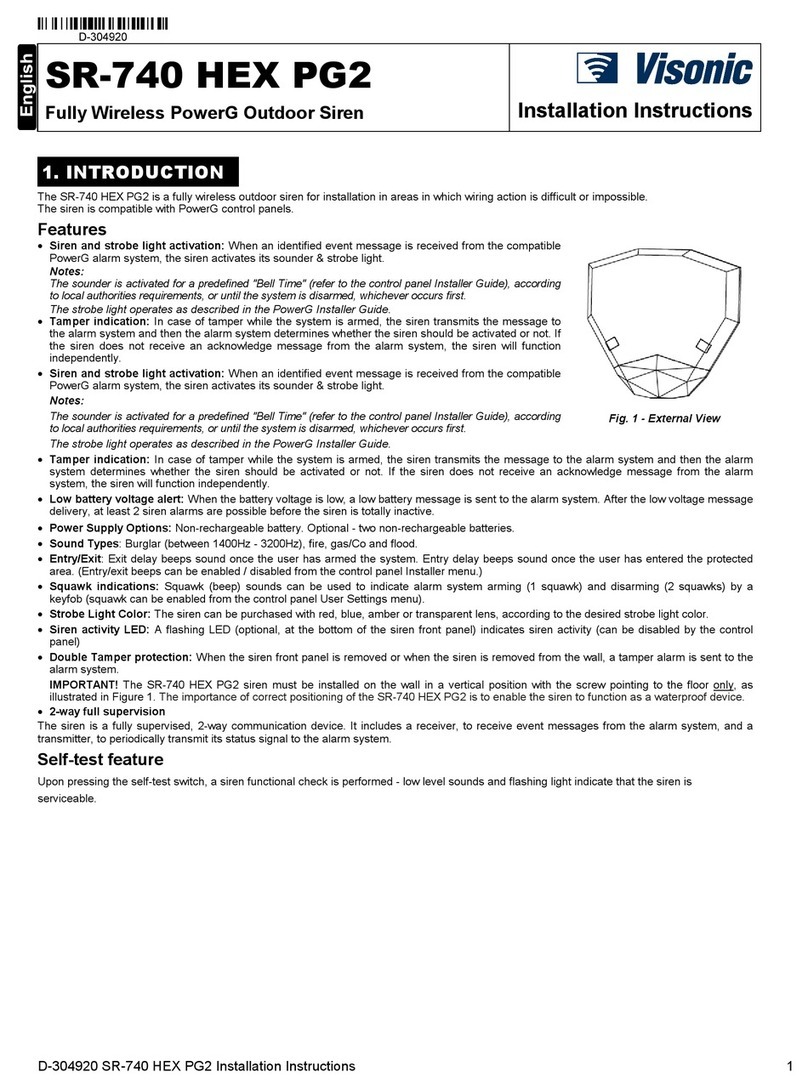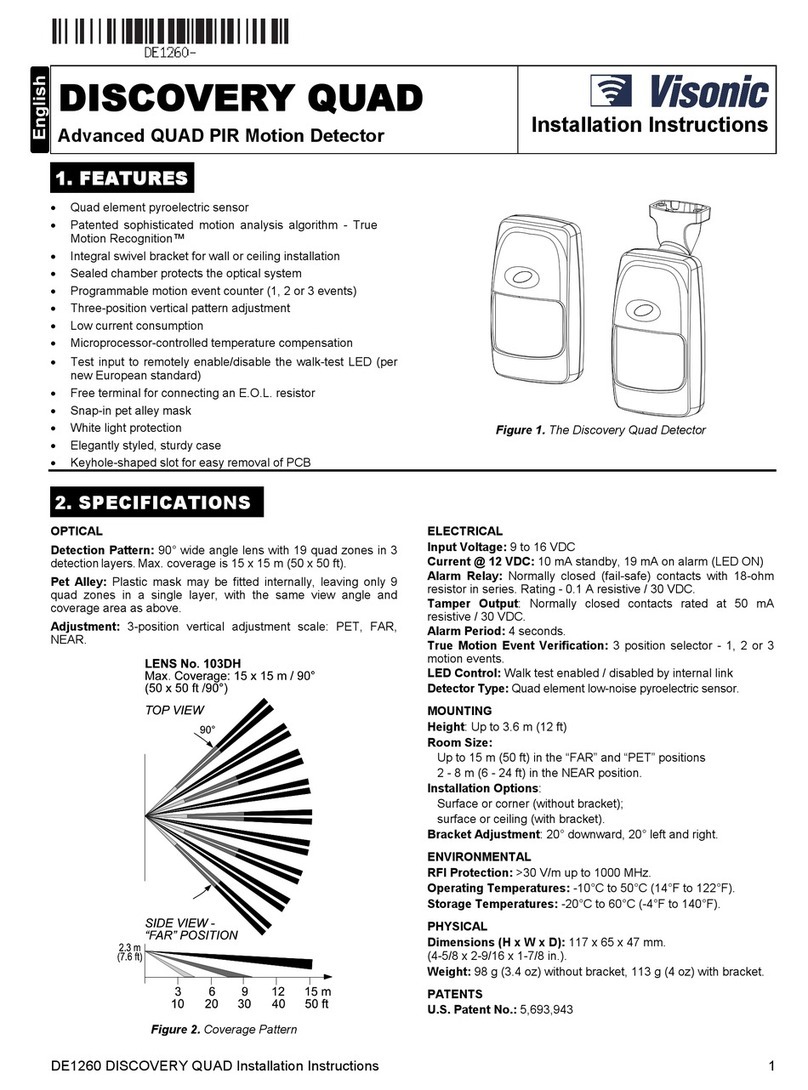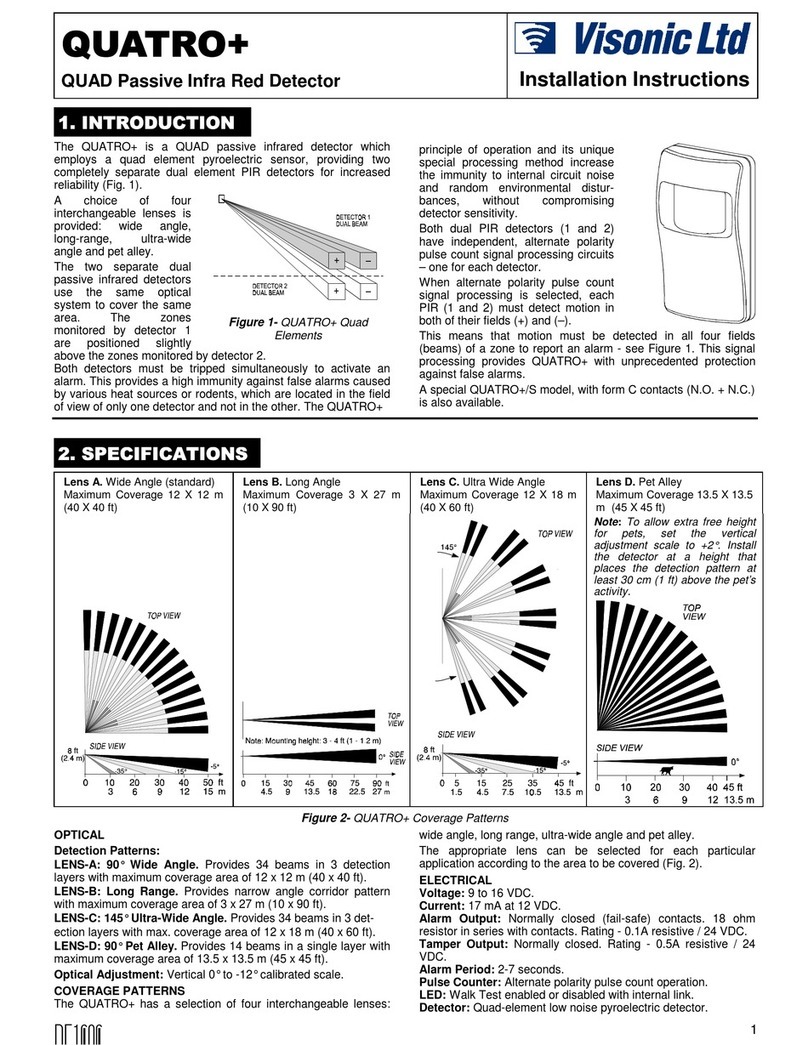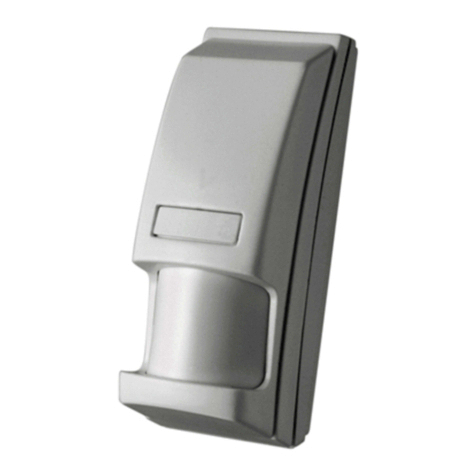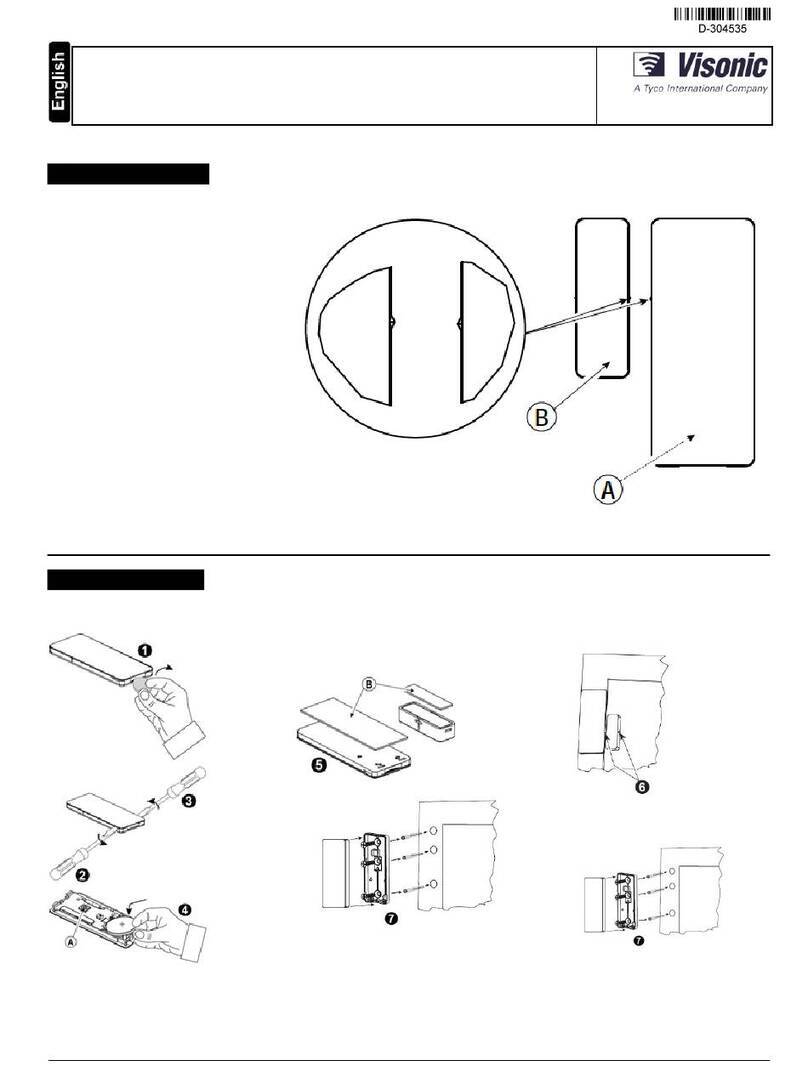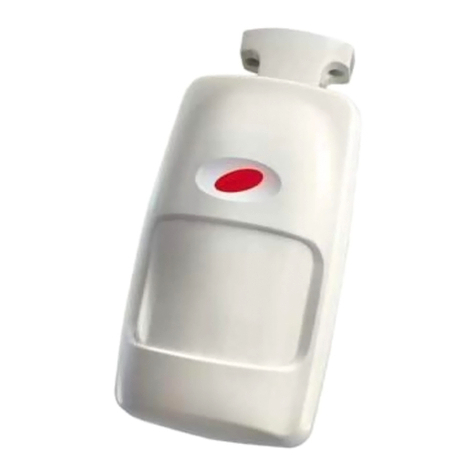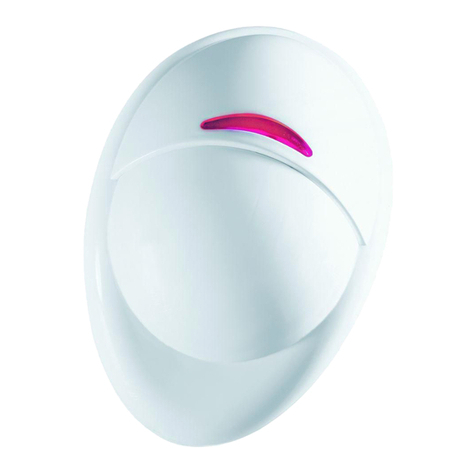
DE3600
'3 6
'3 6'3 6
'3 6
'"/) # $
Visonic Ltd. wireless systems are reliable and are tested to high
standards. However, due to the low transmitting power (required
by the FCC and other regulatory authorities), there are some
limitations to be considered:
A. A receiver may be blocked by radio signals sent on or near its
operating frequency, regardless of the digital code used.
B. A receiver responds to one transmitted signal at a time.
C. Wireless equipment should be tested regularly (at least once
a week) to discover sources of interference and to protect
against faults.
' 5,#)7 ! #/#"/$
WARNING! Changes or modifications to this unit not expressly
approved by the party responsible for compliance could void the
user's authority to operate the equipment.
This device complies with FCC Rules Part 15. Operation is
subject to two conditions: (1) This device may not cause harmful
interference, and (2) this device must accept any interference that
may be received or that may cause undesired operation.
This device complies with the European Council Directive EMC
89/336/EEC & 92/31/EEC and bears the CE mark and
certification.
89:3 ;
89:3 ;89:3 ;
89:3 ;
!7 "/$$#" #
The PowerCode message transmitted by the MCPIR-2000
includes the detector's 24-bit ID and a status report (see Fig. A1).
Figure A1. Transmitted Data
A message includes the following data:
Detector's ID: Any message transmitted starts with the 24-
bit ID assigned to the particular detector unit.
Tamper / Restore: Upon removal of the unit's front cover, a
message will be transmitted with a "tamper marker" ON. If
the unit's cover is put back, a message will be transmitted
with the tamper marker OFF ("Tamper Restore").
Alarm: Once the detector is in alarm, a message will be
transmitted with an "Alarm marker" ON.
Low Battery: A special battery condition marker is used to
report the battery status in any message. The battery is
tested once an hour and if found low, the "low battery
marker" is set to ON in all following messages.
Supervision Message: A special "supervision message
marker", when set to ON, identifies the periodic supervision
messages transmitted automatically at 1 hour intervals. This
marker will be OFF in all other messages.
Transmitter Type: A special marker indicates the type of
the transmitter:
Supervised or non-supervised
Reports or does not report restorals after alarm
The MCPIR-2000 is supervised and does not report
restorals after alarms.
Checksum: Checksum bits at the end of the message allow
the receiver to determine whether an incoming message is
valid (error-free). This feature considerably upgrades the
reliability of the wireless communication link.
,,$
To overcome message collisions at the receiving end,
PowerCode transmitters transmit 3 data bursts at random
intervals, with 6 repetitions of the same message in each burst
(Fig. A2). This redundancy improves the probability of reception.
Note: Periodic supervision messages are an exception to this
rule - they consist of a single 6-message burst.
Figure A2. Anti-Collision Transmission Sequence
3 ;
3 ;3 ;
3 ;
Visonic Ltd. and/or its subsidiaries and its affiliates ("the Manufacturer") warrants its products hereinafter
referred to as "the Product" or "Products" to be in conformance with its own plans and specifications and to
be free of defects in materials and workmanship under normal use and service for a period of twelve months
from the date of shipment by the Manufacturer. The Manufacturer's obligations shall be limited within the
warranty period, at its option, to repair or replace the product or any part thereof. The Manufacturer shall not
be responsible for dismantling and/or reinstallation charges. To exercise the warranty the product must be
returned to the Manufacturer freight prepaid and insured.
This warranty does not apply in the following cases: improper installation, misuse, failure to follow
installation and operating instructions, alteration, abuse, accident or tampering, and repair by anyone other
than the Manufacturer.
This warranty is exclusive and expressly in lieu of all other warranties, obligations or liabilities, whether
written, oral, express or implied, including any warranty of merchantability or fitness for a particular purpose,
or otherwise. In no case shall the Manufacturer be liable to anyone for any consequential or incidental
damages for breach of this warranty or any other warranties whatsoever, as aforesaid.
This warranty shall not be modified, varied or extended, and the Manufacturer does not authorize any person
to act on its behalf in the modification, variation or extension of this warranty. This warranty shall apply to the
Product only. All products, accessories or attachments of others used in conjunction with the Product,
including batteries, shall be covered solely by their own warranty, if any. The Manufacturer shall not be liable
for any damage or loss whatsoever, whether directly, indirectly, incidentally, consequentially or otherwise,
caused by the malfunction of the Product due to products, accessories, or attachments of others, including
batteries, used in conjunction with the Products.
The Manufacturer does not represent that its Product may not be compromised and/or circumvented, or that
the Product will prevent any death, personal and/or bodily injury and/or damage to property resulting from
burglary, robbery, fire or otherwise, or that the Product will in all cases provide adequate warning or
protection. User understands that a properly installed and maintained alarm may only reduce the risk of
events such as burglary, robbery, and fire without warning, but it is not insurance or a guarantee that such
will not occur or that there will be no death, personal damage and/or damage to property as a result.
The Manufacturer shall have no liability for any death, personal and/or bodily injury and/or damage
to property or other loss whether direct, indirect, incidental, consequential or otherwise, based on a
claim that the Product failed to function. However, if the Manufacturer is held liable, whether directly or
indirectly, for any loss or damage arising under this limited warranty or otherwise, regardless of cause or
origin, the Manufacturer's maximum liability shall not in any case exceed the purchase price of the Product,
which shall be fixed as liquidated damages and not as a penalty, and shall be the complete and exclusive
remedy against the Manufacturer.
Warning: The user should follow the installation and operation instructions and among other things test the
Product and the whole system at least once a week. For various reasons, including, but not limited to,
changes in environmental conditions, electric or electronic disruptions and tampering, the Product may not
perform as expected. The user is advised to take all necessary precautions for his /her safety and the
protection of his/her property.
6/91
W.E.E.E. Product Recycling Declaration
For information regarding the recycling of this product you must contact the company from which you orignially purchased it. If you are discarding this product and not
returning it for repair then you must ensure that it is returned as identified by your supplier. This product is not to be thrown away with everyday waste.
Directive 2002/96/EC Waste Electrical and Electronic Equipment.
VISONIC LTD. (ISRAEL): P.O.B 22020 TEL-AVIV 61220 ISRAEL. PHONE: (972-3) 645-6789, FAX: (972-3) 645-6788
VISONIC INC. (U.S.A.):
65 WEST DUDLEY TOWN ROAD
, BLOOMFIELD CT. 06002-1911. PHONE: (860) 243-0833, (800) 223-0020 FAX: (860) 242-8094
VISONIC LTD. (UK): FRASER ROAD, PRIORY BUSINESS PARK, BEDFORD MK44 3WH. PHONE: (0870) 7300800 FAX: (0870) 7300801
INTERNET:
www.visonic.com
VISONIC LTD. 2002 MCPIR-2000 D-3600-0 NEW: DE3600- (REV. 2, 7/02)
P
